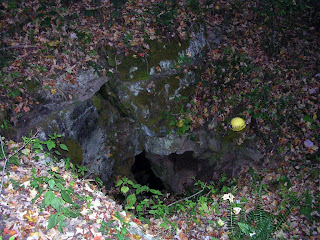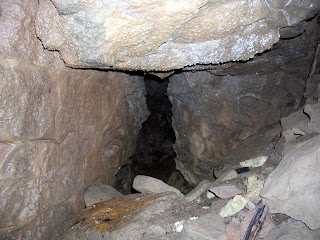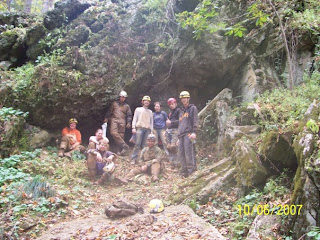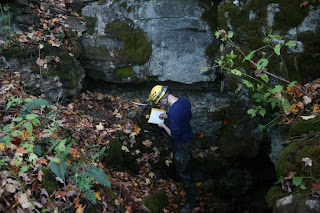
Dave Riggs sketching (poorly) in the entrance sink. Photo by John Harman.
John C. chimneyed up to the very top of the crevice passage and found that it goes to the very top of the limestone, there is literally topsoil at the ceiling. We moved a few rocks and opened up a second "entrance" to the cave, a 9 inch wide and high joint which intersects the top of the crevice passage. It was large enough to survey through for a single closed loop, but you'd have to be seriously determined to actually go into the cave that way.
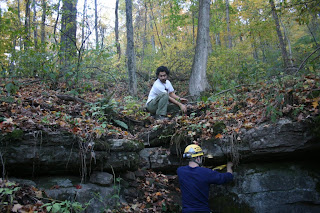
John Cunningham looks for a surface opening to serve as a vertical entrance, while Dave Riggs considers trying to go into the slot entrance. Photo by John Harman.
Working names for the cave are "One Room Wonder" and "Three Turkeys", the latter name being a double-play on the three wild turkeys that tried to scoop our cave that afternoon, and on the "three turkeys" who surveyed it.

Plan view of the cave lineplot. The cave is 65 feet long. Generated using Survex.
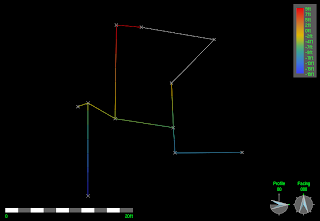
Profile view of the cave lineplot, showing the vertical extent of the crevice passage. The cave is 27 feet deep. Generated using Survex.

Panoramic photograph of the entrance sink. Photo by John Harman.
